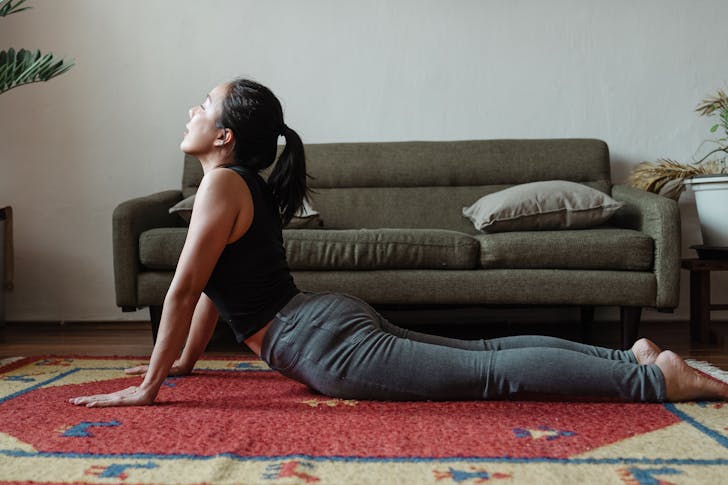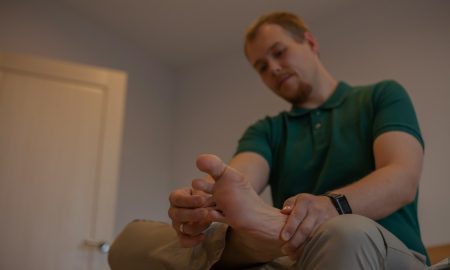
Can Bad Posture Cause Chest Pain?

Have you ever noticed a tightness or discomfort in your chest after sitting for long periods with poor posture? It may surprise you to learn that bad posture can cause chest pain. This common issue is often mistaken for more serious health concerns, but understanding the connection between posture and chest pain can help you find relief. So, can bad posture cause chest pain?
Can Bad Posture Cause Chest Pain?
Yes, bad posture can cause chest pain, and the reason lies in how our muscles and bones respond to prolonged poor positioning. When we slouch or hunch over, the muscles in our chest tighten while the muscles in the upper back weaken. This imbalance puts pressure on the rib cage, leading to discomfort or sharp pain in the chest. It’s a problem that many overlook, but correcting your posture can often alleviate the pain.
How Poor Posture Affects Chest Muscles
Poor posture affects more than just your back and neck. When slouching, the chest muscles, or pectorals, can become tight and strained. This tightness pulls on the rib cage, causing discomfort that may be felt as chest pain. Over time, this strain on the muscles can lead to a condition known as costochondritis, which is the inflammation of the cartilage connecting the ribs to the sternum.
Muscle Imbalances and Chest Pain
Muscle imbalances are a major factor in posture-induced chest pain. When the chest muscles tighten due to poor posture, they pull on the rib cage and cause the upper back muscles to weaken. This imbalance disrupts the body’s natural alignment, resulting in pain that can be sharp, dull, or radiating through the chest and shoulders. Correcting these imbalances through posture exercises can significantly reduce pain.
Referred Pain from Poor Posture
Sometimes, chest pain caused by poor posture doesn’t originate from the chest itself but from other areas, such as the neck or upper back. This is known as referred pain. Forward head posture, a common posture issue, places excessive strain on the neck muscles, especially the scalene muscles, which connect to the ribs. The result is pain that radiates into the chest, often mimicking more serious conditions.
Respiratory Issues from Bad Posture
Bad posture can also impact lung function, contributing to chest discomfort. Slouching reduces lung capacity, forcing your body to rely more on chest muscles for breathing rather than the diaphragm. This overuse of chest muscles leads to tightness and strain, which can result in pain, especially during deep breaths or physical activity. The pain may feel like pressure across the chest, making breathing difficult.
Thoracic Outlet Syndrome and Chest Pain
Thoracic outlet syndrome (TOS) is another condition linked to bad posture that can cause chest pain. TOS occurs when nerves or blood vessels in the upper chest are compressed, often due to slouching or hunching. This compression can lead to pain in the chest, neck, and shoulders, and it may worsen when lifting your arms. Addressing posture issues is key to relieving the symptoms of TOS.
Digestive Issues Linked to Poor Posture
Poor posture doesn’t just affect muscles and nerves; it can also compress your digestive organs. This compression can lead to heartburn or other gastrointestinal issues, which may be mistaken for chest pain related to heart problems. Sitting for long periods with a slouched posture can trigger this discomfort, making it essential to maintain proper posture, especially after eating.
How to Fix Chest Pain from Bad Posture
Bad posture can lead to chest pain due to the strain it places on muscles, tendons, and nerves around the chest. Luckily, there are simple ways to correct posture and reduce or eliminate the discomfort. Here’s how you can fix chest pain caused by bad posture.
1. Improve Your Posture
The first step is to maintain proper posture while sitting or standing. Ensure your back is straight, your shoulders relaxed, and your head aligned with your spine. Avoid slouching, especially during long periods of sitting, and make a conscious effort to adjust your posture throughout the day.
2. Stretching Exercises
Regular stretching helps relieve muscle tightness and improves flexibility. Focus on chest-opening stretches like the doorway stretch. Stand in a doorway, place your arms on the frame, and gently lean forward to stretch your chest muscles. Hold for 30 seconds and repeat several times a day.

Ketut Subiyanto | Pexels | Regular stretching helps relieve muscle tightness and improves flexibility.
3. Strengthening Exercises
Strengthen your back and core muscles to support better posture. Exercises like planks and rows help balance the muscles between the chest and back, reducing tension and chest pain. Perform these exercises consistently to build muscle endurance and maintain proper posture.
4. Use Posture Support Devices
If you struggle to maintain good posture, using a posture corrector or ergonomic chair can help. These tools provide gentle support to keep your shoulders aligned and your spine straight, reducing the strain on your chest muscles.
5. Take Frequent Breaks
Sitting or standing in one position for too long can worsen posture-related chest pain. Take regular breaks to move around and stretch your body. Even short breaks can relieve muscle tension and help improve posture throughout the day.
When to Seek Medical Attention
If chest pain persists despite correcting your posture and performing exercises, it’s essential to consult a healthcare professional. A physical therapist or chiropractor can assess your posture, identify the root cause of the pain, and create a personalized treatment plan to alleviate it. They may also recommend specific exercises or manual therapies to correct your posture further and reduce chest pain.
Healthcare professionals can help ensure that your chest pain isn’t related to a more serious condition and provide expert advice on improving your posture for long-term relief.
More in Anti-Aging
-
`
How to Overcome Imposter Syndrome?
Imposter Syndrome is a familiar term many recognize as a psychological state where individuals doubt their accomplishments, fearing that others will...
June 27, 2024 -
`
Which Peptides Are Best for Anti-Aging?
For those seeking to combat the signs of aging and maintain a youthful appearance, the world of skincare can feel overwhelming....
June 18, 2024 -
`
Celebrities with Celiac Disease – Inspirational Stories and Struggles
Celiac disease is a serious condition, and even the rich and famous aren’t immune. Many celebrities have been open about their...
June 10, 2024 -
`
How to Fix Poor Sleep Hygiene for Better Rest
Sleep is a fundamental human need, as crucial for our well-being as a healthy diet and regular exercise. Yet, many people...
June 6, 2024 -
`
5 Easy & Effective Ways of Coping With Depression
Depression is more than just feeling sad or having a bad day. It is a pervasive mental health condition that affects...
May 30, 2024 -
`
Top 10 Practical 60th Birthday Ideas For Everyone
Turning 60 is a milestone worth celebrating! Whether you are planning your own bash or organizing a celebration for a loved...
May 24, 2024 -
`
What is the Meaning of Angelina Jolie’s Back Tattoo? Explore
If you have ever caught a glimpse of Angelina Jolie’s back tattoo, you might have wondered, “What is the story behind...
May 17, 2024 -
`
Chronic Heal Pain Can Be A Sign of Cancer – Here’s How You Get It Under Control
Have you ever wondered if that nagging heel pain was something more than just wear and tear? Is heel pain a...
May 11, 2024 -
`
When to Walk Away from Someone with Mental Illness – Signs and Strategies
Deciding when to walk away from someone with mental illness is a deeply personal decision that can be challenging to navigate....
April 30, 2024
















You must be logged in to post a comment Login